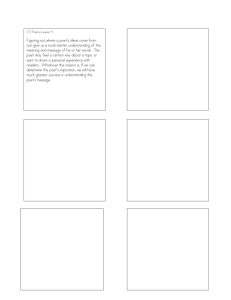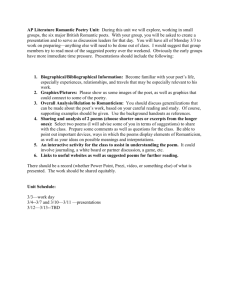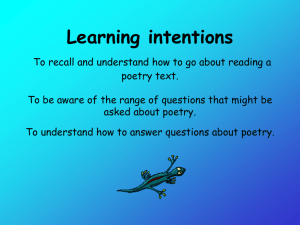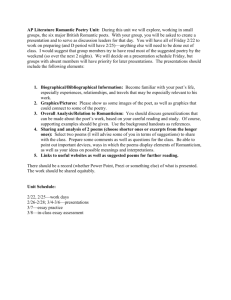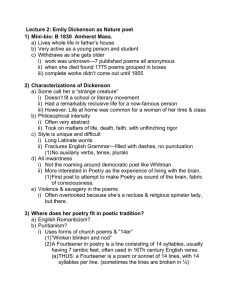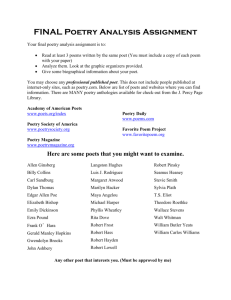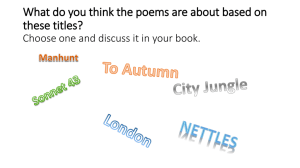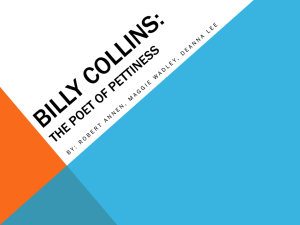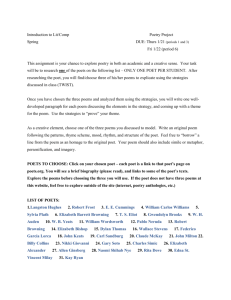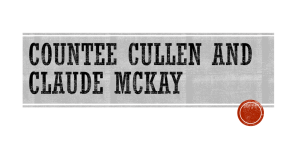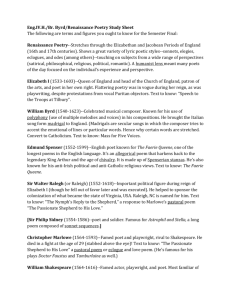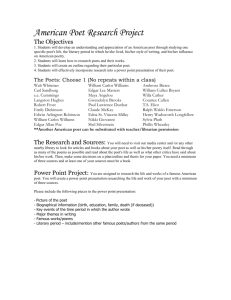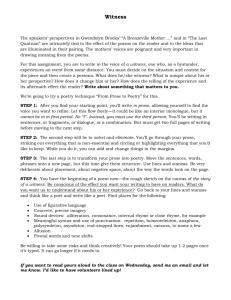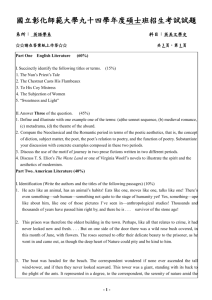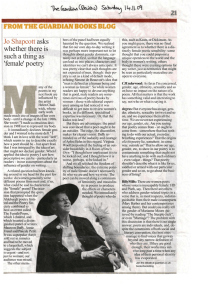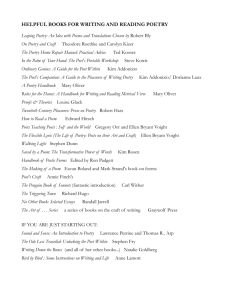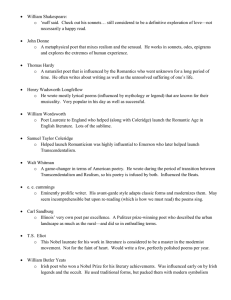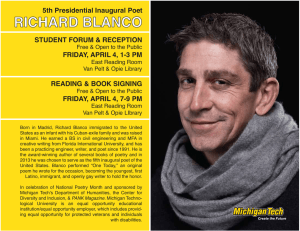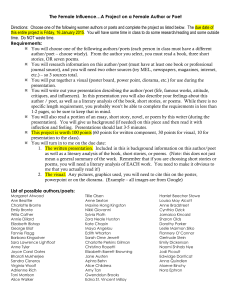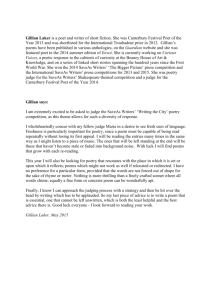Americká literatura
advertisement
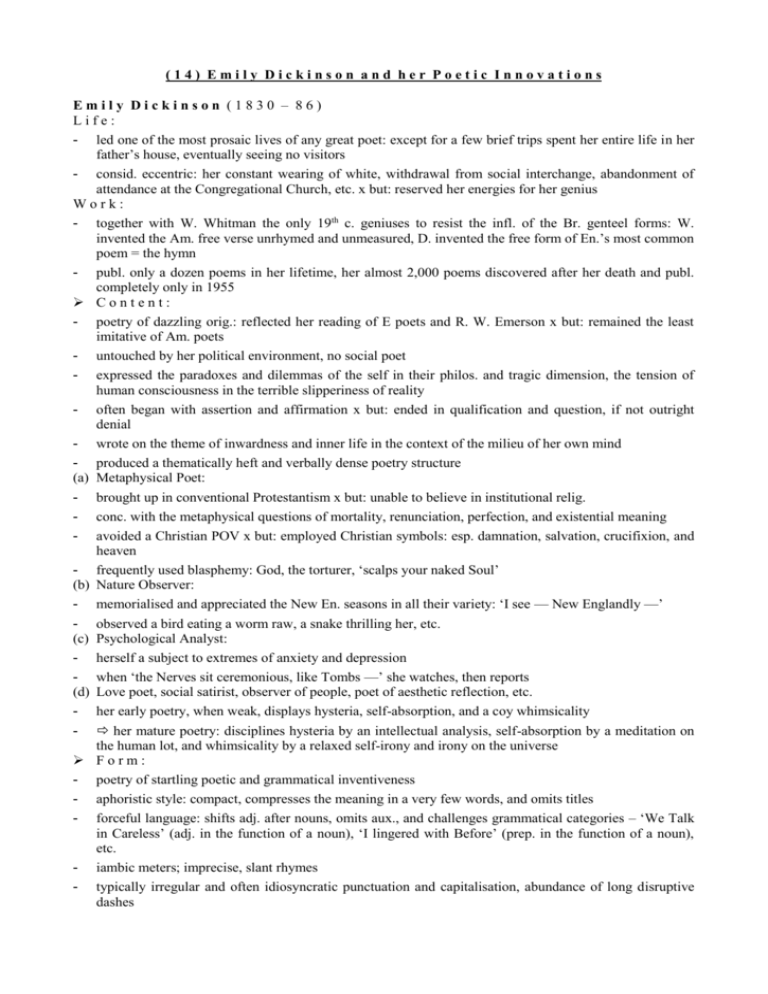
(14) Emily Dickinson and her Poetic Innovations Emily Dickinson (1830 – 86) Life: - led one of the most prosaic lives of any great poet: except for a few brief trips spent her entire life in her father’s house, eventually seeing no visitors - consid. eccentric: her constant wearing of white, withdrawal from social interchange, abandonment of attendance at the Congregational Church, etc. x but: reserved her energies for her genius Work: - together with W. Whitman the only 19th c. geniuses to resist the infl. of the Br. genteel forms: W. invented the Am. free verse unrhymed and unmeasured, D. invented the free form of En.’s most common poem = the hymn - publ. only a dozen poems in her lifetime, her almost 2,000 poems discovered after her death and publ. completely only in 1955 Content: - poetry of dazzling orig.: reflected her reading of E poets and R. W. Emerson x but: remained the least imitative of Am. poets - untouched by her political environment, no social poet - expressed the paradoxes and dilemmas of the self in their philos. and tragic dimension, the tension of human consciousness in the terrible slipperiness of reality - often began with assertion and affirmation x but: ended in qualification and question, if not outright denial - wrote on the theme of inwardness and inner life in the context of the milieu of her own mind - produced a thematically heft and verbally dense poetry structure (a) Metaphysical Poet: - brought up in conventional Protestantism x but: unable to believe in institutional relig. - conc. with the metaphysical questions of mortality, renunciation, perfection, and existential meaning - avoided a Christian POV x but: employed Christian symbols: esp. damnation, salvation, crucifixion, and heaven - frequently used blasphemy: God, the torturer, ‘scalps your naked Soul’ (b) Nature Observer: - memorialised and appreciated the New En. seasons in all their variety: ‘I see — New Englandly —’ - observed a bird eating a worm raw, a snake thrilling her, etc. (c) Psychological Analyst: - herself a subject to extremes of anxiety and depression - when ‘the Nerves sit ceremonious, like Tombs —’ she watches, then reports (d) Love poet, social satirist, observer of people, poet of aesthetic reflection, etc. - her early poetry, when weak, displays hysteria, self-absorption, and a coy whimsicality - her mature poetry: disciplines hysteria by an intellectual analysis, self-absorption by a meditation on the human lot, and whimsicality by a relaxed self-irony and irony on the universe Form: - poetry of startling poetic and grammatical inventiveness - aphoristic style: compact, compresses the meaning in a very few words, and omits titles - forceful language: shifts adj. after nouns, omits aux., and challenges grammatical categories – ‘We Talk in Careless’ (adj. in the function of a noun), ‘I lingered with Before’ (prep. in the function of a noun), etc. - iambic meters; imprecise, slant rhymes - typically irregular and often idiosyncratic punctuation and capitalisation, abundance of long disruptive dashes - composition by phrase: each marked off by a dash with a space before and after, puts emphasis on each impress of the mind for a rhetorical emphasis or musical pointing also wrote following poems of distinction: “After great pain, a formal feeling comes”, “Because I could not stop for Death”, “A bird came down the walk”, “Hope is the thing with feathers”, “I died for Beauty — but was scarce”, “I heard a Fly buzz — when I died”, “My life closed twice before its close”, “There’s a certain Slant of light”, “This is my letter to the World”, “To make a prairie it takes a clover and one bee”
